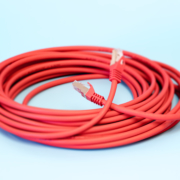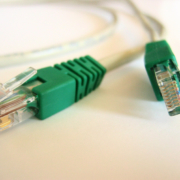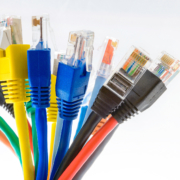What is Cat7 Cabling?
Category 7 Cabling
What is Cat7 Cabling? Category 7 cabling is a licensed standard, which defines transmission properties for frequencies up to 600 MHz. Cat7 cabling was designed with future application in mind. This grounding of all hardware involved provides greater throughput speeds, security against EMI/RFI interference, and protection from power surges. Furthermore, with the explosion of HD video content across networks, and converged voice and data in enterprise, Cat7 cabling is becoming more common.
Cat 7 Cable speed vs. Cat 6 Cable speed: What’s the Difference?
Category 7 (Cat 7) cable can support speeds of up to 600 MHz, double that of Category 6 (Cat 6), which only supports speeds of up to 250 MHz.
Can i use Cat7 for Internet?
Yes. Using a professional grade Cat 7 cable for your network infrastructure is an important step in ensuring the speed and integrity of your data. It’s important to realise, your network system must be upgraded to retain the full benefits of Cat7 cabling. after all, your network is only as good as its weakest link.
Why Cat7 vs. Cat6? Which one should I use?
While a Cat6a SSTP shielded twisted pair (S/FTP) cabling can achieve much higher speeds than Cat6 cable; for shorter runs (under 55 metres). The speed advantage of S/FTP over U/UTP is relatively small. This short distance advantage of S/FTP cable, however, is magnified with an increase in data rates. Furthermore, Cat 7 cable can provide 500 MHz speeds on shielded patch cords for very short distances. Additionally, the price premium for Cat 7 cable is not justifiable when compared with that of Cat 6 cable. However, when higher speeds are required in shorter cables. You will need to utilise Cat 7 cable or better still deploy S/FTP Cat 6a cabling.
What does the “A” stand for in Cat 7a?
The “A” stands for Augmented. This simply means that the cable has shielding. Cat 7a cables provide improved alien crosstalk over un-shielded Cat 7 cables, thus allowing you to double the speed of your existing Cat7 cabling (with an S/FTP design) without requiring the new hardware that would be required by shielded Cat6 cabling.
What is the best use of Cat7 vs. Cat5e?
When considering whether to upgrade from Cat5e to Cat 7, it is important to consider that if you are connecting 2 devices more than 55 metres apart, or carrying a heavy concentration of Gigabit Ethernet connections, a Cat 7 cable would be a better choice.
Cat7 vs Cat8
Category 8 cable is designed for speeds of up to 600 MHz, which caters to 10GBASE-T operation. In comparison, Cat 7 cable only supports the lower 2.5GBASE-T and 5GBASE-T applications. Its important to realise, Category 8 cable is not backwards compatible with any of the lower categories of cabling. It will only work with other Category8 cables. Lastly, Cat8 also requires more accurate distances between the two cables than required by Cat 7 cable.
S/FTP vs U/UTP
Shielded Twisted Pair (S/FTP) consists of an S shaped copper grounding conductor which is wrapped around the insulating layer of the cable. This provides excellent protection from Electro-Magnetic Interference (EMI) and Radio Frequency Interference (RFI). S/FTP cabling is more expensive than Un-shielded Twisted Pair (UTP) cabling because it requires an additional manufacturing step which increases the cost of manufacture. In addition, U/FTP cable will only operate up to 250MHz, whereas S/FTP cable will operate up to 500MHz. U/FTP is less expensive and an easy choice for data centres and office environments where there is no requirement for EMI protection.






Share this entry